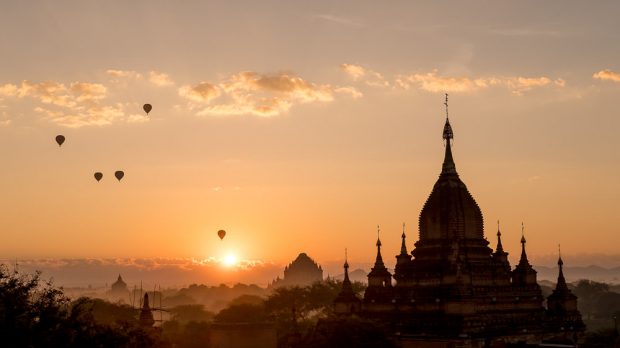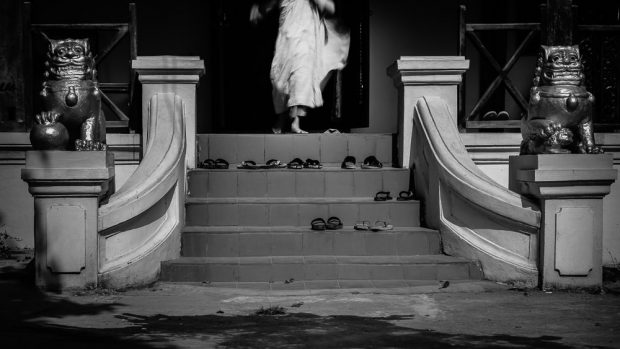Photography Basics: Simple Composition Techniques Composition In Photograhpy

Photography is a complicated art form. The elements of exposure, composition, light, subject matter, moment, and many others all come together to make a single two-dimensional image that is presented to a viewer. Learning all of this is time-consuming and difficult. Taken step-by-step, however, each of the elements can be methodically learned and combined to form your own photographs. Once you know how to operate your camera an extremely powerful tool you can add to your kit is a starting knowledge of composition.
Composition is the arranging of elements within the frame of a photograph. Despite what many articles or videos may tell you, it’s less about following rules and more about utilizing a set of guidelines to find an appropriate way of describing the scene you have in front of you with the camera in your hand. Every scene is different. Some will be simple, some will be much more complex. With that being said, here are five elements of composition you can draw on to help your viewer see what you want them to in your photographs.
This may not classically be included in lists of techniques for composition, but I feel that this is one of the most important concepts to grasp when approaching a photograph. Composition in most forms of photography is the art of exclusion. You have a limited space within the borders of your photograph which can only contain so much before you dilute your message.
Your goal when composing a photograph should be to point to something. You want your viewer to look at what you’re trying to show them. One way you can do this by cutting out all the clutter of the world and just showing them what you want them to see. A few ways you can achieve this in photography include getting closer to your subject, using a longer focal-length lens for a narrower field of view, using depth-of-field to isolate your subject from other elements in the scene, or using shadow to hide things that do not contribute to the message you are trying to give.
Master the fundamentals. Own your destiny. Learn More.
The scene below was extremely cluttered. There were hundreds of people around at this ceremony. By looking down at a puddle and using only the reflection of the elements I wanted to show, I was able to cut out that clutter and point you towards what I wanted you to see.

When you break the elements of a two-dimensional photograph down, the people, buildings, trees, lakes, and everything else in your frame simply become lines. Our eyes reconstruct these lines and equate them to things we know as we view an image. As a photographer, learning how you can use lines is very powerful.
One simple way to use lines is for their drawing power. Lines that are simply graphic can be used to lead the viewer around your image. These are called Leading Lines. When you’re looking at a scene and deciding how to compose it, consider what your subject is first and then consider what elements in the scene might draw the viewer towards that subject. Can you find a receding line, like a fence that draws you to the old house on the hill? Maybe there’s a crack in the concrete leading to a flower growing at the base of a wall. The viewer’s eye will naturally follow lines so they can be very useful in directing people to what you want them to look at.

This is one of the most talked-about compositional techniques. Perhaps because it is so simple to implement, but also because of what it suggests. All you need to do is to divide your frame vertically into three equal parts and horizontally into three equal parts. By placing your subject on one of the four points where these dividing lines meet, you will encourage the viewer away from the centre of the frame. This forces them to look around the image and makes your composition more interesting.
Master the fundamentals. Create your masterpiece. Learn More.
This, in and of itself, may not be enough to elevate your composition. However, it does force you to think about keeping your subject off-centre and explore different ways of framing the scene. This can be powerful. By moving the subject to one side or the other, you might be able to include or exclude other elements, find leading lines, work differently with light, or create tension by putting your subject close to the edge of the frame.

Evenly spaced, identical (or very similar) objects can be arranged to create repetitive patterns in your photographs. Things like fence-posts, the lines of a pedestrian crossing, an orchard of trees. Anything that can be arranged into a repeating pattern can bring a great intensity to a photograph. Depending on the subject matter, it may be calming, like a row of pillars on a building, or alarming, like endless rows of soldiers marching in time.
Either way, breaking that pattern can be equally as powerful as establishing it. Looking at the photograph below, you will see that there are several carts of salt lined up along a track. However, most likely, the first thing your eye locks onto and stays on will be the spade sticking out of one of them. This is the element that breaks the repetition and jars you back into thinking about the image. Try to find patterns and then find ways to break them. This contrast can arrest your viewer.

I mentioned at the beginning of this article that the two-dimensional nature of photographs is important when considering our compositions. One technique for adding depth to our images is layering things over the top of other things. Simply put, you can cover part of your frame with something closer to the camera in order to give the illusion of depth.
You can use the leaves of a tree to frame a couple in the park, empty beer glasses on a bar while the bartender pours fresh ones in the background, or an audience listening to a speaker on stage at a corporate event can make a good frame that doesn’t simply show the speaker out of context. All of these things not only fill your frame with interesting elements, they further the story you’re trying to tell. In the case of the frame below, I don’t want you to simply see that there is one temple out on this plane, I want you to see that there are others and that it is a huge expanse. By using a wide-angle lens and including the foreground, I have achieved all three of those things but am still pointing you to the beautiful structure in the background.
Of course, these are not the only elements of composition and they are only the basics. In a short article such as this, there is only so much of this huge topic that we can cover. I hope that the actionable points here can improve your composition. By practicing, you will add more tools to your photographic arsenal and they’ll become second nature.
Master the fundamentals. Build your arsenal of skills. Learn More.


Untuk mempermudah kamu bermain guys www.fanspoker.com menghadirkan 6 permainan hanya dalam 1 ID 1 APLIKASI guys,,,
BalasHapusdimana lagi kalau bukan di www.fanspoker.com
WA : +855964283802 || LINE : +855964283802 ||